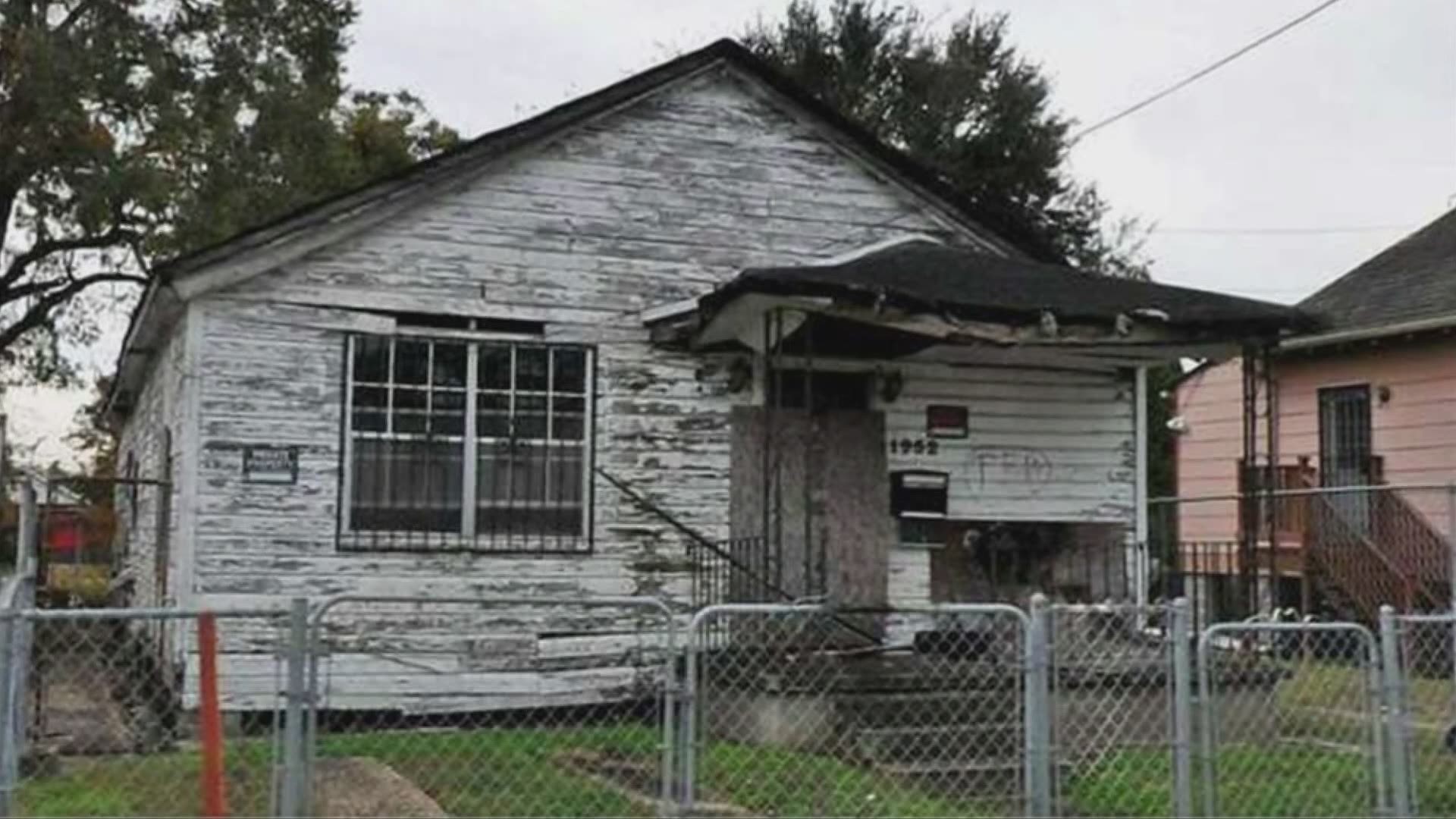NEW ORLEANS — Albert Jackson and Coralee Smith say the view from their front porches has never looked better. It’s thanks to an excavator that arrived in recent days.
“When they did come, we were so glad,” Jackson recently said. “Everybody clapped,” Smith added.
1952 N. Dorgenois St. in the 7th Ward had been a rundown, vacant, crumbling house until late last month. Neighbors say it was termite-ridden and full of rodents. People in the neighborhood also used it to do drugs inside of, they say.
They say the home flooded during Hurricane Katrina. The owner kept up with it for a while then disappeared. Neighbors spent 16 years looking at it slowly fall apart, watching people go in and out -- and reporting it to the city, hoping something would be done.
“We kept on reporting it over and over, and no one would pay us any mind,” Jackson said. “All the neighborhood was calling,” Smith said.
City records show the rotting home had 14 violations -- the first half-dozen noted in 2014.
It wasn’t until early this year that the code enforcement department tacked up a notice of demolition.
A person can own property and keep it vacant. It’s when a property begins to fall apart and not meet certain city codes that it becomes a problem. Just how many properties fit that category is unclear.
A request to interview the city’s code enforcement director was not granted.
In a statement issued earlier this week, City Hall said they have issued 2,453 guilty judgments against derelict property owners since Mayor LaToya Cantrell took office in 2018.
But there is “no real-time way to determine the condition of properties we have imposed judgments on or that citizens may not have reported to us yet that may meet the definition of blight.”
Code enforcement officials in 2019 told the New Orleans City Council that there were an estimated 25,000 to 30,000 vacant, blighted properties in the city.
City Hall said there have been 157 lien foreclosure cases since Cantrell took office. Those can result in properties being auctioned off. The city did not provide a requested number of how many properties have been demolished since then.
Dawn Hebert, who heads up the Eastern New Orleans Neighborhood Advisory Commission, doesn’t need a number to know how bad the problem of vacant, blighted buildings is.
She just has to drive along I-10. It’s there you’ll see things like a former LaQuinta Inn that has fallen apart since the August 2005 storm.
“It doesn’t get like this overnight. It’s been this way since Katrina,” she said. “We’re really hoping that at some point the city will address this, will contact the owner, cite them and insist that it be repaired.”
Hebert said the Landrieu administration took a stronger stance on vacant properties.
“Myself and a few other community members used to go to something called Blight Stat meetings. And actually Quality of Life meetings. So at those you had all of the directors of anyone dealing with code enforcement, sanitation.
“And we felt that once we talked about properties we were concerned about they would be addressed. And it really helped. Because we would bring pictures, we -- and they knew that when we came back the next month we were going to bring it back up again if nothing was done.”
Hebert said that anyone driving through the East -- including developers -- seeing vacant and blighted properties leaves with a negative perception, something she says isn’t reality.
“A lot of people actually don’t know what we have out here: beautiful neighborhoods. Lake neighborhoods. We have about seven lake neighborhoods.”
Recently, Mayor LaToya Cantrell announced the Mow to Own program, designed to let people who live next to a vacant lot get first dibs on buying it if they cut the grass.
“I know firsthand. I have two right behind me,” she said while announcing the program.
Hebert credits Cantrell with that initiative.
“Before this, developers would come in if it went up for auction and they would be outbid on that property,” Hebert said.
A long legal process can eventually lead to demolition. But for properties -- residential or commercial -- that fester, Hebert questions if that threat is enough since so many sit for so long.
“We do as much as we can do -- or legally do. And we can only do so much. So we are expecting the government -- our Orleans Parish government -- to stand up and take action,” she said.
Back in the 7th Ward, neighbors say they’re glady they were finally heard.
“Looks like a whole new block with that gone,” Jackson said one recent afternoon.
But they know this is just one step.
“We hope somebody can still come cut the grass when it starts growing,” Smith said.

